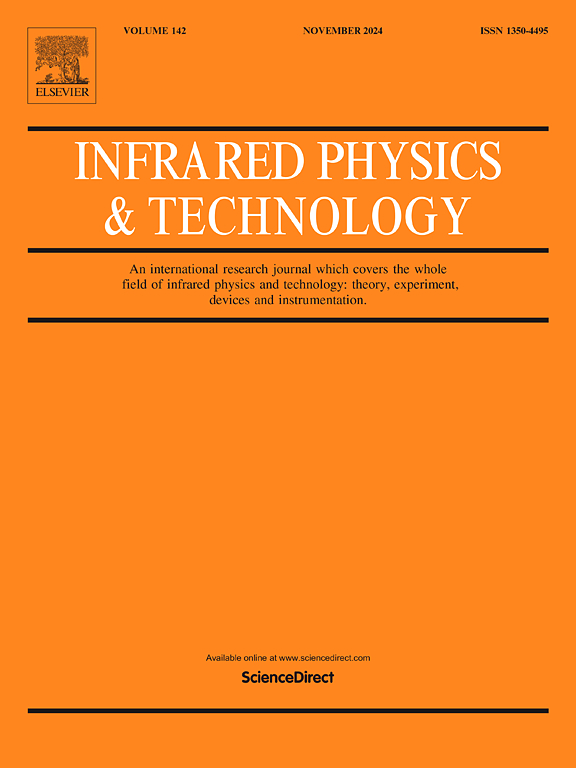IF 3.1
3区 物理与天体物理
Q2 INSTRUMENTS & INSTRUMENTATION
引用次数: 0
摘要
本文设计并实验演示了一种具有超宽线性响应和超高分辨率的高灵敏度光纤环激光扭转传感器(FRLTS)。基于椭圆纤芯光纤(ECF)的萨纳克环路干涉仪(SI)被用作光纤环激光扭转传感器的扭转传感元件和滤波器。实验结果表明,最大线性扭转测量范围可达 340°,顺时针和逆时针方向的线性扭转灵敏度分别为 0.10 nm/° 和 -0.10 nm/°。由于使用了光纤环形激光器,扭转传感器的光谱具有线宽窄、信噪比高等特点,有利于提高传感器的分辨率。它实现了 0.43° 的高分辨率,与之前报道的 FRLTS 方案相比至少提高了 2.3 倍,与基于干涉仪的同类型光纤方案相比提高了 47.4 倍。所提出的传感器具有线性响应范围宽、分辨率高、灵敏度高、易于制造等优点,在航空、医疗、健康监测等领域具有巨大的应用潜力。本文章由计算机程序翻译,如有差异,请以英文原文为准。
High sensitivity fiber ring laser torsion sensor with ultra-wide linear response and ultra-high resolution
In this paper, a high sensitive fiber ring laser torsion sensor (FRLTS) with ultra-wide linear response and ultra-high resolution is designed and experimentally demonstrated. An elliptical core fiber (ECF) based Sagnac loop interferometer (SI) is utilized as a torsion sensing element as well as a filter in the FRLTS. Experimental results demonstrated that the maximum linear torsion measurement range of the torsion up to 340°, and the linear torsion sensitivities are 0.10 nm/°and −0.10 nm/° in the clockwise and counterclockwise direction, respectively. Due to the use of the fiber ring laser, the spectrum of the torsion sensor exhibits narrow linewidth and high signal-to-noise ratio, which is beneficial to enhance the resolution of the sensor. It achieves a high resolution of 0.43°, which is at least 2.3 times in comparison to that of previous reported FRLTS scheme and 47.4 times in comparison to that of interferometer-based scheme with the same type fiber. The proposed sensor possesses the advantages of wide linear response range, high resolution, high sensitivity and easy fabrication, which has great potential of applications in the field of aviation, medical, health monitoring.
求助全文
通过发布文献求助,成功后即可免费获取论文全文。
去求助
来源期刊
CiteScore
5.70
自引率
12.10%
发文量
400
审稿时长
67 days
期刊介绍:
The Journal covers the entire field of infrared physics and technology: theory, experiment, application, devices and instrumentation. Infrared'' is defined as covering the near, mid and far infrared (terahertz) regions from 0.75um (750nm) to 1mm (300GHz.) Submissions in the 300GHz to 100GHz region may be accepted at the editors discretion if their content is relevant to shorter wavelengths. Submissions must be primarily concerned with and directly relevant to this spectral region.
Its core topics can be summarized as the generation, propagation and detection, of infrared radiation; the associated optics, materials and devices; and its use in all fields of science, industry, engineering and medicine.
Infrared techniques occur in many different fields, notably spectroscopy and interferometry; material characterization and processing; atmospheric physics, astronomy and space research. Scientific aspects include lasers, quantum optics, quantum electronics, image processing and semiconductor physics. Some important applications are medical diagnostics and treatment, industrial inspection and environmental monitoring.

 求助内容:
求助内容: 应助结果提醒方式:
应助结果提醒方式:


